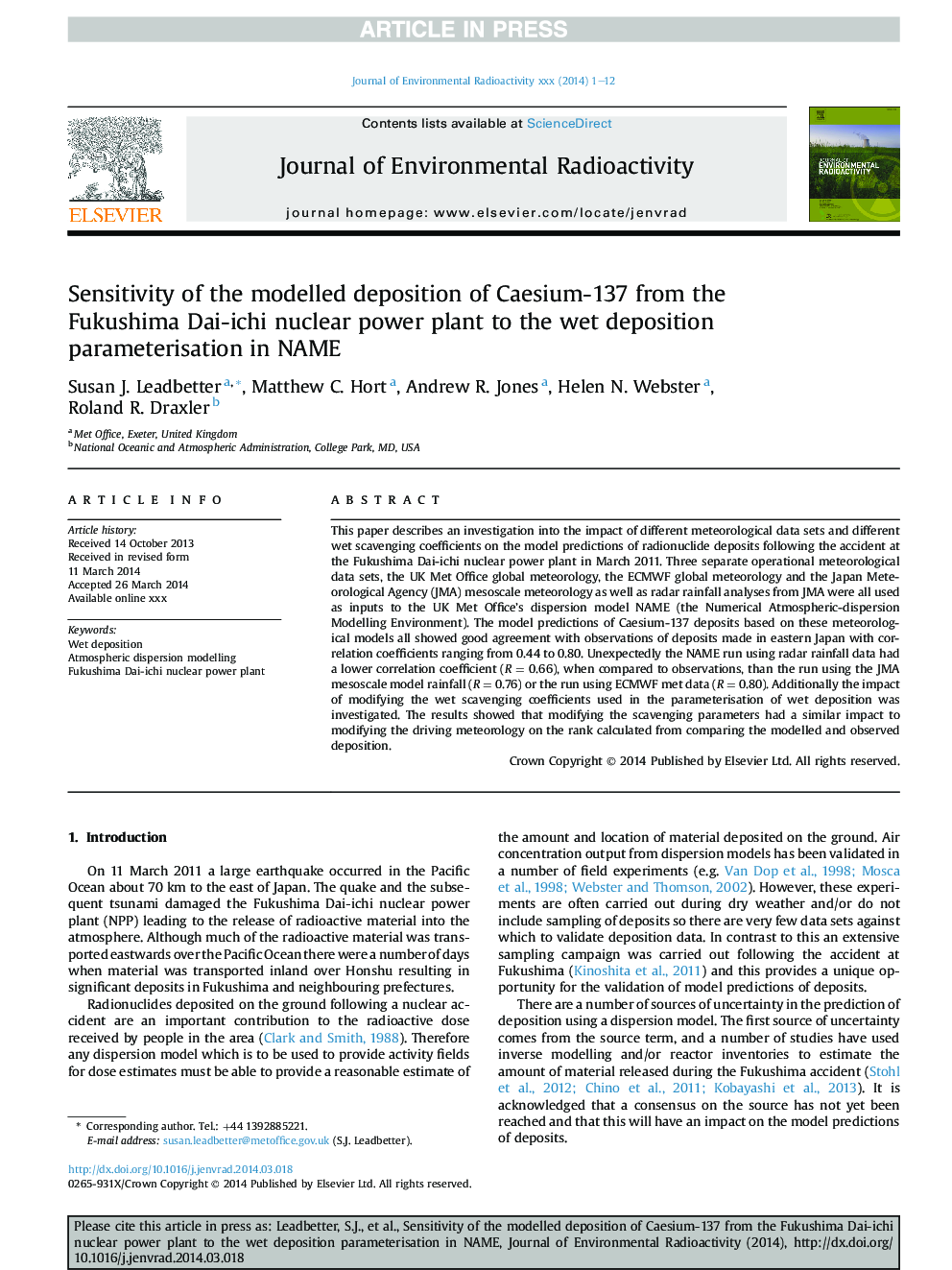| Article ID | Journal | Published Year | Pages | File Type |
|---|---|---|---|---|
| 8082603 | Journal of Environmental Radioactivity | 2015 | 12 Pages |
Abstract
This paper describes an investigation into the impact of different meteorological data sets and different wet scavenging coefficients on the model predictions of radionuclide deposits following the accident at the Fukushima Dai-ichi nuclear power plant in March 2011. Three separate operational meteorological data sets, the UK Met Office global meteorology, the ECMWF global meteorology and the Japan Meteorological Agency (JMA) mesoscale meteorology as well as radar rainfall analyses from JMA were all used as inputs to the UK Met Office's dispersion model NAME (the Numerical Atmospheric-dispersion Modelling Environment). The model predictions of Caesium-137 deposits based on these meteorological models all showed good agreement with observations of deposits made in eastern Japan with correlation coefficients ranging from 0.44 to 0.80. Unexpectedly the NAME run using radar rainfall data had a lower correlation coefficient (RÂ =Â 0.66), when compared to observations, than the run using the JMA mesoscale model rainfall (RÂ =Â 0.76) or the run using ECMWF met data (RÂ =Â 0.80). Additionally the impact of modifying the wet scavenging coefficients used in the parameterisation of wet deposition was investigated. The results showed that modifying the scavenging parameters had a similar impact to modifying the driving meteorology on the rank calculated from comparing the modelled and observed deposition.
Related Topics
Physical Sciences and Engineering
Energy
Nuclear Energy and Engineering
Authors
Susan J. Leadbetter, Matthew C. Hort, Andrew R. Jones, Helen N. Webster, Roland R. Draxler,
